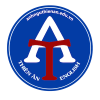Cambridge 11 Test 1 (IELTS Writing) - Task 1 & Task 2
- Bạn chuẩn bị thi IELTS và đang tìm kiếm cho mình một đề thi để thử sức mình?
- Bạn muốn xem bài viết tham khảo cho các đề thi IELTS trong cuốn sách huyền thoại Cambridge nhưng không biết tìm nguồn ở đâu cho uy tín?
- Bạn muốn học hỏi thêm từ vựng, ideas, cấu trúc thường gặp trong đề thi IELTS để bổ sung kiến thức cho mình?
Bài chia sẻ này dành cho bạn!


- Cấu trúc đề thi IELTS (Academic & General)
- Cấu trúc đề thi VSTEP (B1-B2-C1)
- Cấu trúc đề thi PET (B1) Cambridge
- Cấu trúc đề thi TOEIC Speaking & Writing
- Cấu trúc đề thi TOEIC Listening & Reading
- Kinh nghiệm làm bài thi IELTS
- Kinh nghiệm làm bài thi PET (B1)
- Kinh nghiệm làm bài thi TOEIC Speaking & Writing
- Kinh nghiệm làm bài thi TOEIC Listening & Reading
Cambridge 11 Test 1 (IELTS Writing) - Task 1 & Task 2
Task 1 (Cambridge 11 Test 1 IELTS Writing)
Câu hỏi : The charts below show the percentage of water used for different purposes in six areas of the world. Summarize the information by selecting and reporting the main features, and make comparisons where relevant.


| Useful Expressions 1 | Useful Expressions 2 |
+ The majority of the amount of ST : Phần lớn lượng ST + Use = Consume + The lowest quantity of ST : Lượng thấp nhất ST + In terms of = Related to + In the top three : Nằm trong top 3 | + Respectively = Sequentially + Simultaneously = Meanwhile + The proportion / percentage / ratio / rate of ST + Account for = Make up : Chiếm + A fifth / seventh : 1/5; 1/7 |
Task 2 (Cambridge 11 Test 1 IELTS Writing)
Câu hỏi : Government should spend money on railways rather than roads.
To what extent do you agree or disagree with this opinion?
Mở Bài
It is no doubt true that we have achieved a great breakthrough in means of transportation resulting in concerns among people about whether governments ought to expend money in railways or roads. While I am strongly inclined to opt for railways, I think governments should also balance the budget for both of these means of transportation.
Thân Bài 1
On the one hand, the infrastructure improvement for railroads exerts positive effects. Firstly, carriage of goods benefits from this investment. Locomotives can carry tonnes of goods to most cities and regions in countries whereas automobiles or trucks are not likely to do this. Secondly, allocating money for commuter rails is considered to be an economically prudent decision. Indeed, reaching many long-distance destinations throughout a country or region with an affordable rail fare without getting stuck in traffic congestion helps the majority of citizens easily travel, especially to hometowns or remote areas. Finally, this means of transportation steps in to curb environmental pollution. In comparison to conveyances using roads, trains cause less fossil fuel combustion and greenhouse gas emissions.
Thân Bài 2
On the other hand, it is worthwhile to balance the budget for both railways and roads. Initially, roads are always pondered to be the prevalent mode of transportation amongst countries. The vehicles using roads range from bikes, motorbikes, cars, buses, to trucks, which suit a rich variety of people’s travelling needs. Besides, the exponential increase in population and demand for transport forces governments to have funds diverted to many methods of transportation encompassing railways and roads in an effort to derive the satisfaction from commuters and shipping companies. Moreover, nowadays, people are tending towards using conveyances operated by electricity for lowering environmental degradation resulting from fossil fuel combustion. This means that we had better expend money on both roads and railways because both of them act as the main means of transportation all over the world.
Kết Bài
For the aforementioned reasons, not only do I subscribe to the view that governments should spend money on railways in place of roads, but I also believe that a balanced division between them is necessary for us to consider. (349 words)
| Useful Expressions 1 | Useful Expressions 2 |
|
+ It is no doubt true that S + V
+ Achieve a great breakthrough in ST : Đạt được sự phát triển lâu dài
+ Means / Mode / Method of transportation : Phương thức giao thông
+ Expend ST in / on = Spend ST on = Allocate ST for
+ Be strongly inclined to = Want to
+ Opt for = Choose
+ Infrastructure improvement for : Sự cải thiện cơ sở hạ tầng
+ Exert effect : Sản sinh tác động
+ Carriage of goods : Việc vận chuyển hàng hóa
+ Locomotive : Đầu máy xe lửa
+ Automobile = Car
+ Economically prudent decision : Quyết định có lợi về mặt kinh tế
+ Rail fare : Giá vé xe lửa
+ Get stuck in traffic jam / traffic congestion
|
+ Step in = Help
+ Curb / Control / Limit environmental pollution
+ In comparison to = By comparison with + Conveyance = Vehicle
+ Fossil fuel combustion : Việc đốt cháy nhiên liệu
+ It is worthwhile to = It is necessary to
+ Ponder = Consider
+ Exponential increase : Sự gia tăng càng ngày càng nhanh
+ Divert (from ST) (to/into ST) : Phân chia tiền
+ Encompass = Include
+ In an effort to
+ Tend towards ST / V_ing : Hướng đến
+ Environmental degradation : Sự phá hủy môi trường
+ Aforementioned = Mentioned above
+ Subscribe to = Agree
+ In place of = Instead of
|
Be With You – Reach Your Target!
Cambridge 11 Test 1 (IELTS Writing) - Task 1 & Task 2
Hy vọng bài giải tham khảo bên trên giúp bạn có thêm ideas và từ vựng, cấu trúc hay nếu gặp lại đề này hoặc tương tự trong tương lai nhé!
Chúc các bạn học tiếng Anh thật tốt. Hẹn gặp lại các bạn trong các bài chia sẻ tiếp theo từ Anh ngữ Thiên Ân!
Link từ điển Oxford dùng cho việc tra cứu: https://www.oxfordlearnersdictionaries.com
(Nguồn: Anh ngữ Thiên Ân – Cambridge 11 Test 1 (IELTS Writing) – Bài Viết Tham Khảo Từ Anh Ngữ Thiên Ân – Vui lòng trích dẫn nguồn khi copy bài viết sang website khác)




































